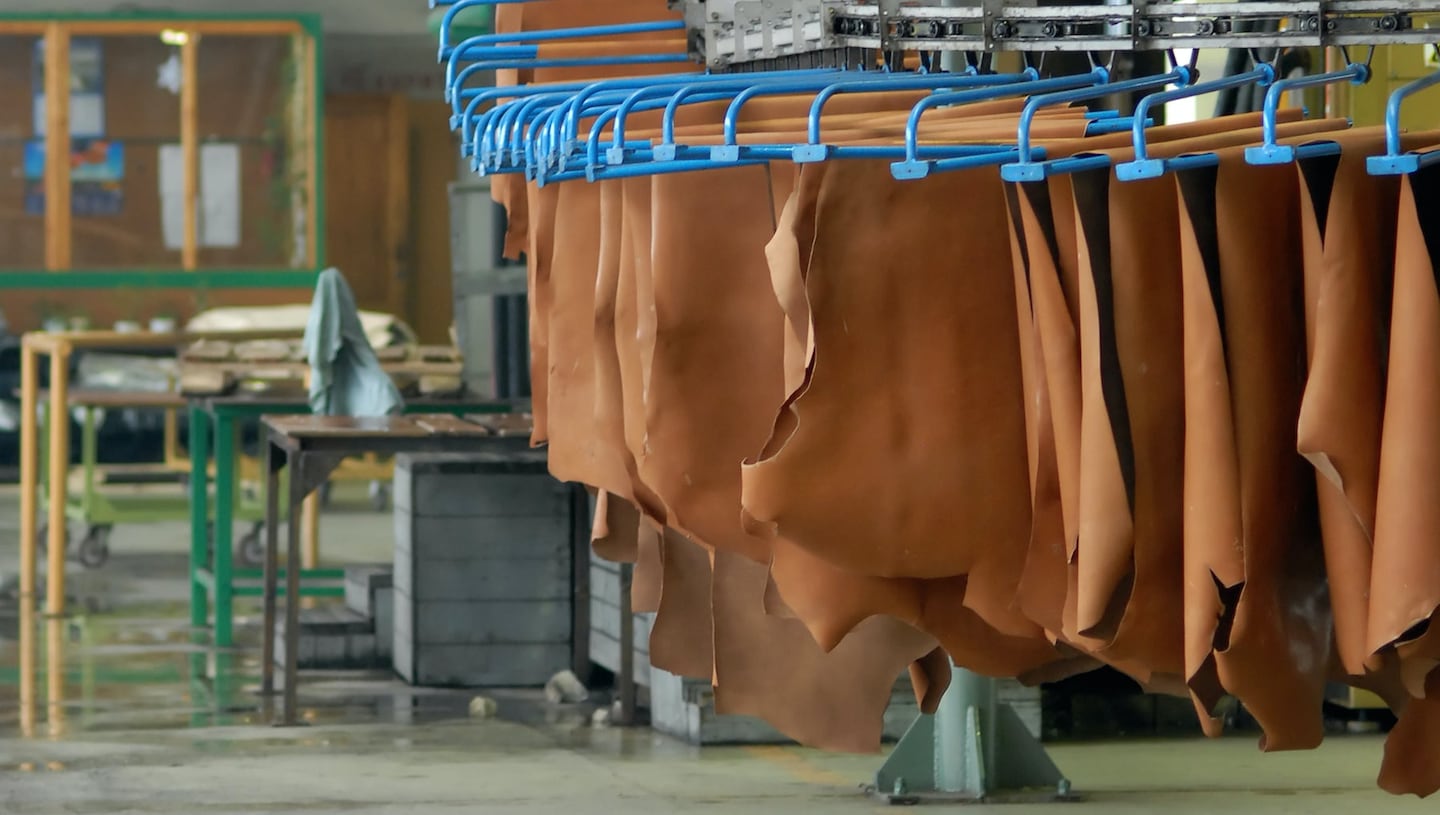
The Business of Fashion
Agenda-setting intelligence, analysis and advice for the global fashion community.

Agenda-setting intelligence, analysis and advice for the global fashion community.

LONDON, United Kingdom — Considering the chemical processes routinely involved in making them, can leather goods ever be sustainable? The answer is yes — but not if they are manufactured in the manner currently employed by the majority of luxury goods companies.
It begins with the leather. Well over three quarters of the tanneries represented at any trade fair use the process of chrome tanning to turn animal hides into the leather that is used by high street, contemporary and luxury brands alike. Chrome tanning, a nineteenth-century invention, is an efficient, quick and inexpensive method that has obvious appeal to brands.
However, when it comes to environmental impact, chrome tanning comes at an awfully high cost. Chrome, like any heavy metal, is extremely toxic and environmentally damaging. Chromium VI, a common carcinogenic waste product from leather manufacturing, has been found in the food chains and water supplies of both developing and developed countries.
Try chewing a piece of chrome-tanned leather and see how long it takes for your mouth to go numb. And as long as the consumer continues to buy chrome-tanned goods, without understanding or caring about the environmental impact of the process, there is little incentive for luxury brands to switch to vegetable tanning, which takes longer, is more expensive, and does not as easily disguise low quality skins — but is far less damaging to the environment.
ADVERTISEMENT
Leather goods, even with constant use, can last over a hundred years. In this sense, they are a highly sustainable product. An artisan who makes leather gun cases told me that, if a leather bag is made properly, it should be decades before it needs repair. However, in order to boost margins and cope with increased demand, many luxury brands now manufacture their leather goods to a much lower standard
Many of these products, even those costing upwards of £1000, will last only a few years before they are in need of repair, or simply fall apart. Cost-cutting tricks include treating the edges of bags with acrylic varnish that causes the material to crack within a few years, instead of using techniques like turned edges or burnishing which are more time-consuming, but create a product that last for decades. Brands also use low-grade hardware on their products, such as white metal rather than solid brass or plated steel. One the most self-defeating ways in which expensive brands have undermined the quality of their goods relates to the stitching techniques they currently employ, which ignore the lessons learnt from hundreds of years of saddle making.
A leather good cannot be considered ‘sustainable’ or ‘luxury’ if a brand has compromised on materials and manufacturing processes to the point that the object will last mere years, rather than decades. Price alone does not determine whether or not a product is luxury. Many brands, including some of the most august names in the luxury industry, have undermined their legacies by chasing volume and profits at the cost of quality, all while doing considerable harm to the environment.
What is more, this approach is not necessary. Hermès proves that a luxury brand can maintain its integrity and earn record level profits. It is telling that, at Christie's online auctions, vintage Hermès products command the highest prices. Making products slowly and using methods that mean the goods will stand the test of time leaves both the planet — and a brand’s legacy — less damaged.
Mesh Chhibber is the co-founder of Peau de Chagrin, a sustainable leather goods company.
The views expressed in Op-Ed pieces are those of the author and do not necessarily reflect the views of The Business of Fashion.
Join the discussion on BoF Voices, a new platform where the global fashion community can come together to express and exchange ideas and opinions on the most important topics facing fashion today.
The fashion industry continues to advance voluntary and unlikely solutions to its plastic problem. Only higher prices will flip the script, writes Kenneth P. Pucker.
The outerwear company is set to start selling wetsuits made in part by harvesting materials from old ones.
Companies like Hermès, Kering and LVMH say they have spent millions to ensure they are sourcing crocodile and snakeskin leathers responsibly. But critics say incidents like the recent smuggling conviction of designer Nancy Gonzalez show loopholes persist despite tightening controls.
Europe’s Parliament has signed off rules that will make brands more accountable for what happens in their supply chains, ban products made with forced labour and set new environmental standards for the design and disposal of products.